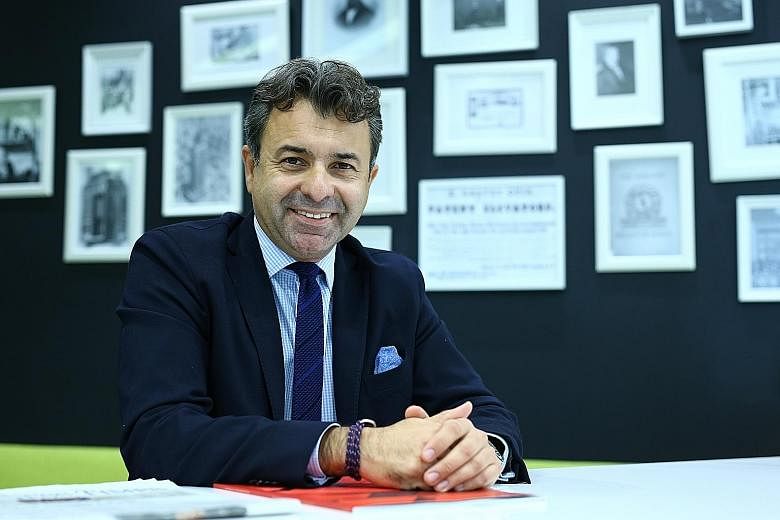To most people, lifts are innocuous moving boxes that they ride every day to get up and down buildings.
But to Mr Bora Gulan, 45, vice-president of global major projects at Otis Elevator Company, lifts in a building are like the "veins of the human body".
Mr Gulan, who is Turkish and based in London, says: "We're a very important trade in the building industry. If the veins don't carry blood to the body parts, the body does not move. It's the same for elevators. We're an important mode of transportation."
Much has changed in the elevator business since the company's founder and American industrialist Elisha Graves Otis invented a safety brake for lifts in 1853.
Back then, people relied on hoisting systems to move things and buildings were short - as high as only a few storeys - until Otis' brake ensured that lifts would not crash to the ground if the cables broke.
It paved the way for skyscrapers to be built. Today, the 162-year-old American company - the largest manufacturer and service provider of elevators, escalators and travellators - has installed lifts in some of the world's most famous structures, including the Eiffel Tower in Paris, the Empire State Building in New York and the 829.8m-tall Burj Khalifa in Dubai.

Last year, the company won a tender to install about 600 lifts and escalators for the northern stretch of the Thomson-East Coast Line MRT project here.
As building projects get fancier and more ambitious, lifts are also catching up with the times. They are getting smarter and sleeker and more building owners want to customise their features.
Mr Gulan, who grew up working for his father's lift company in Istanbul, says: "The future of the elevator industry is to serve the vertical transport demand in high-rise buildings more efficiently and sustainably by reducing pollution.
"We also have to build lifts more intelligently - by reducing the core space they take up."
How do you think lifts of the future will be different?
It will be a fully seamless experience. When you enter the building, you will not have to push the call buttons. The lift will recognise you through your security badge or iPhone, know which floor you work on and take you there.
Inside the cabin, we are working on personalised messages such as your events for the day, the lunch menu or your own music. Even the lighting can be personalised.
It will be much more interactive than the standard messages now. It will be like back in the early days when there was an attendant in the elevator to greet you.
Which is the most personalised lift the company has made?
Many people want their own design, from door finishes to cabin aesthetics. I have seen elevators in one of the Gulf countries clad in real gold. Whatever our customers want, we do it.
Are lifts different around the world?
Yes, but it is because of different cultures. If you go to America, people care about speed - they want to go to their desk or lunch quickly. It is all about efficiency.
But if you go to Japan, the ride quality is extremely important. They will sacrifice the speed at which the door closes and slow down the elevator so that the ride is comfortable. I think lifts in Japan travel about 30 per cent slower than those in America.
Do you ever get sick of looking at lifts and escalators?

When I look at an escalator from 200m away or when I see it in a movie, I immediately recognise which brand it is. Then I start comparing its ride quality, speed and features - it is a job hazard, I think.
Many of my friends also look at the brand of the elevator they are in. A typical passenger would not. When my son was three and could not read or write yet, he could recognise the Otis name on elevators.
What is the best way to get out of a lift that is stuck?
Do not panic. Wait for someone to come and get you. Do not climb out of the lift like they do in the movies. You should not be Bruce Willis.


